Latest Posts by dipstickflopdoodle - Page 5
On White Fear & Creating Diverse Transformative Works
So whenever fandom tries to address the question “Why aren’t there more works featuring characters of color?” there are a myriad of (predictable) responses. One of which is appearing with increasing frequency: “Because we (usually: white creators of transformative works) are afraid of getting it wrong.”
And like. I’ve already addressed how ‘thinking you’ll get it wrong’ is a failure of both imagination and of craft/skill (and a symptom of the racial empathy gap, which I forgot had a proper name when I wrote that post). Meanwhile, @stitchmediamix absolutely accurately pointed out that the ‘fear’ being discussed is fear of being called racist, not necessarily fear of failure.
Now, we could go into the whole absurdity of white fragility here, but google is a thing and “white fragility” is discussed all over the place and I trust ya’ll to do the work if you actually give a shit about this subject… which I assume you do, if you’re reading this – but if you’re just here to find a way to dismiss the issue at hand, I’m gonna save you some time and recommend you scroll past.
Writers can also be fragile, especially in transformative works communities, where “if you don’t have anything nice to say, hit the back button and keep your mouth shut” is the primary expectation wrt feedback, and anything that deviates from that is considered a mortal insult (do you vageublog about my fic, sir?). But if we’re willing to deploy an array of tools to make our writing not-My-Immortal-bad, from spellcheck to wikipedia to in-depth historical research to betas and britpickers and so on, then we should be willing to employ equivalent tools to avoid writing racist stories.
Incidentally, writing stories that erase/ignore extant characters of color, especially if they’re prominent in the source text? is racist. So avoiding writing characters of color altogether is not the solution to making your writing not-racist.
And, okay. I feel it’s important to acknowledge here, as I have before, that the Fear of Fucking Up is a very real fear that genuinely does affect people’s enthusiasm for / likelihood to write, regardless of the validity or fairness of that Fear’s origins, and I’m going to be generous enough to assume that there are some people who are acting in good faith when they say “I want to, but I’m scared.”
So. This is for those who are acting in good faith, from the perspective of a white fan who has written fic about characters of color in several fandoms and never gotten pilloried for it, even when I know for a fact (in retrospect) that I’ve fucked up details.
(oh, side note: I know this is mostly tackling things from a writing perspective, but a lot of this can apply to creating transformative works overall with a few tweaks.)
First: realize that the likelihood of getting called out is actually pretty low. And fans of color aren’t as Mean and Angry and Unfairly Sensitive as some people want us to believe. (Do you vagueblog about That Dumpster Fire Meta, sir? / No, sir, I do not vagueblog about That Meta sir; but I do vagueblog, sir.)
This is not to say that there aren’t people out there who’re more than willing to make a (justified) stink about egregiously racist writing. But it’s actually very rare to get targeted, especially publicly by a large number of unhappy fans. Because you know what? most fans, including fans of color, want to just have fun in fandom as much as anyone else.
It’s just, y’know, a little harder for fans of color to ‘just have fun’ when us white fans are showing our asses with stories involving “Dragon Lady” Elektra or “Angry Black Woman” Sally Donovan or “Spicy Latin Lover” Poe Dameron. And sometimes us white fans only listen to what fans of color are saying when they make a Big Deal out of it.
That’s not a failure of their ability to stay calm. That’s our failure to listen before they get loud and organized. Because I’m willing to bet that people who get called out publicly? got a few polite, private messages about their screwup first, and they doubled down instead of listening.
Also: there is a thing where, no matter how politely they word their critique, fans of color, especially black fans, are more likely to be unjustly perceived as ‘mean’ and ‘angry’ by white fans. Again, that’s our failure, not theirs. Plus, even if they are angry, that doesn’t automatically mean they’re wrong (see: Tone Argument).
Step Two is: pay attention to discussions about racist tropes in fiction. Yes, even when it’s crit of our favorite shows/movies/characters/etc. If you understand the Manic Pixie Dream Girl trope and why it’s harmful, or you understand the Bechdel-Wallace test, or you can have a meaningful discussion about Mary Sues, or you can (justifiably) rail about how Bury Your Gays sucks, then you can develop a similar appreciation for racial biases and stereotypes. And then you can find ways to avoid them.
No, no one’s expecting you to memorize bell hooks so you can write a drabble about Iris West, or demanding you write a dissertation on media stereotypes wrt the simultaneous fetishization and desexualization of Asian women (who aren’t a monolith, either, but Hollywood doesn’t seem to know that) before you’re ‘allowed’ to write Melinda May in a story, but like. Pay attention when people, especially fans of color, are talking about common tropes so that you don’t unthinkingly replicate or perpetuate them in your fic.
Yes, racist writing can involve more than just thoughtless parroting of harmful tropes, but my best guess is, ninety-nine times out of a hundred, fanwork getting ‘called out’ in fandom involves those tropes. So avoiding them takes your chances of getting criticized from ‘low’ to ‘almost nonexistent.’ Less to fear, see?
Step Three is: more research – basically, at least as much as you’d be willing to invest in any equivalent white character. @writingwithcolor is a great blog, and has links to additional resources; . If you’re the type to get a beta or a britpicker, find a sensitivity reader or a beta of the appropriate background. Not all fans of color are willing to do this kind of unpaid labor, just as not all fans are willing to britpick/beta, but they’re out there. Approach them respectfully, and listen to them if they say that something in your story looks off.
It’s worth noting here that writing about characters of color doesn’t need to involve - and in fact, some advice recommends avoiding - telling Special Stories About Racism. Stories about characters of color don’t need to be about slavery or civil rights or the constant parade of microaggressions they have to deal with daily in order to be realistic or compelling (or angsty, for those who love writing angst, as I do). Research can turn up useful information that can inform our choices as writers, but if we don’t share the oppression our characters face, it’s not our job to tell stories specifically about that oppression.
Step Four is: before posting, anticipate the worst. What will you do if someone says you fucked up? If your answer is “argue with them and talk over their concerns,” stop. Remember that you’re not a victim of a ‘mean fan of color,’ but that you’ve probably written something that they consider harmful. Being told that you wrote something racist isn’t an attack on your moral fiber. You’re not an irredeemable monster if you fuck up, but your response to being told you fucked up is far more telling. Acknowledge their concerns, fix the issue if you can, learn from your mistake, and fail better next time.
You cannot improve if you don’t try in the first place. Failure to try is failure, so try your best, and improve incrementally – just as you already do as a writer with any story.
In conclusion: The 4 Steps to Getting Over Yourself as a White Fanfic Writer: (1) recognize that the likelihood of getting called out is pretty low; (2) educate yourself about the most common racist writing issues, so that likelihood will be even lower; (3) do your due diligence when writing; (4) in case of the worst: apologize, fix the issue, learn from the experience, fail better in the future.
(And again, google is your friend – there are a lot of people who’ve written about this subject, like Kayla Ancrum, Morgan Jenkins, the mods at Writing with Color, Thao Le, and Monica Zepeda, among many, many, others. I’m merely sharing my own perspective from what I’ve learned from listening to a lot of smart people, in case it might help some of you – if it doesn’t, keep looking, a ton of great resources are out there.)
as much as the concept of Jesus being a fairly normal lad has its charms, im personally very intrigued by the idea of him being just… extremely weird. not even in a mystical sense, just…….staggeringly BIZZARRE.
you go to the well to get some water, and here’s Miriam’s boy, staring at the sky, completely still. his expression is unreadable. you hazard a hello and ask how he’s doing, and he slowly, unblinkingly, lowers his gaze on you (he’s 8 and is missing his frontal teeth, not that this is making you any less uncomfortable) and says “I cannot speak of the state of my being, Nathan son of Saul, my brother, but rejoice for the water you shall take today will be as pure as the soul of the children of Heaven”
…you start sweating
ALL ACTIVE DBD CODES
PRIDE - Pride charm
INSERTCOIN - Arcade machine charm
DECIPHERSTRIKE - 150k bloodpoints
so I go to animation school now





My father was right. I’d waited here to kill him. But my father was also wrong. About pretty much everything else.
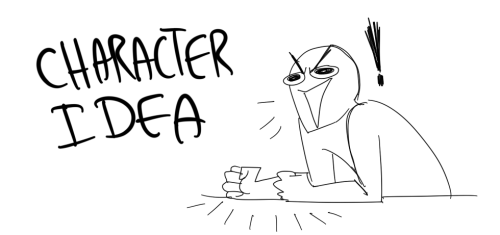
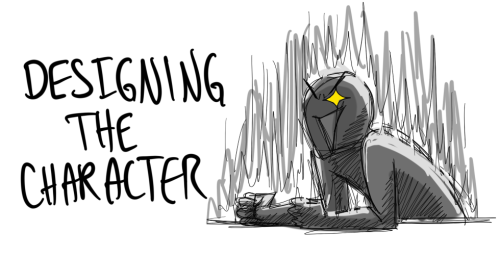
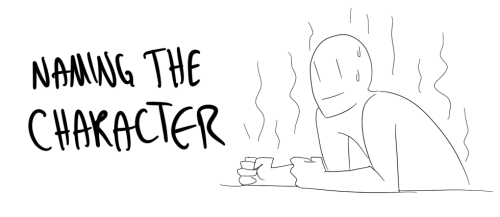
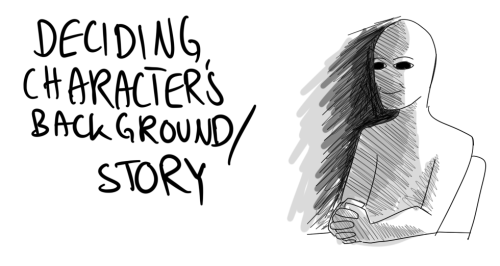
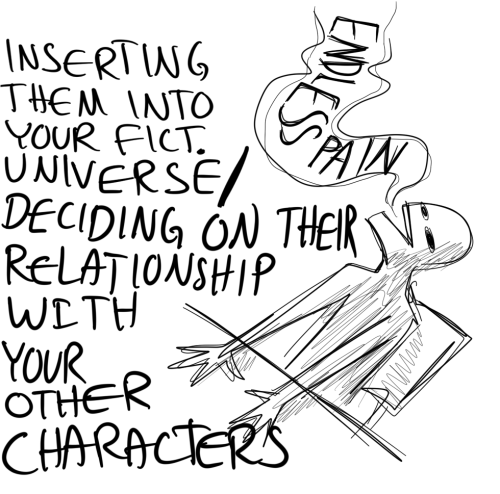
the suffering never ends
I do appreciate people willing to be educated on creating characters who are Muslim and wanting to be respectful but there is a whole lot of nuance in Muslims and different interpretations of beliefs that people need to understand.

The main one I’ve seen a lot is “here is how to correctly have a hijabi character” and it’s usually a headscarf covering all of the hair and modest, which is good, this is a good representation of a Muslim, but on the flip side, there are so many different interpretations of veiling among Muslims that saying only one is correct just seeks to enforce a sort of homogeneity among Muslims that disregards our own cultural traditions all over the world. Not all of us wear hijab or veil in the same way, not all of us have the same interpretations. As much as people try to understand that Islam is a religion, there are many who treat being Muslim as if its the equivalent of an ethnicity.

Not to say veiling is exclusively Islamic either, plenty of cultures and religions other than Islam veil/practice modesty, what I’m mainly trying to say is that different cultures have different cultural traditions surrounding modesty/veiling/hijab within Islam. In different cultures around the world there are also different terms for the type of hijab/veil they wear as well. Hijab will look different wherever you are looking, and the type of hijab style your character might wear may pertain to which culture they may come from. It’s important to keep this in mind while also being aware of inter-communal nuance.
(This is coming from a Muslim from cultures where people did not used to veil as many deem ‘acceptable’ now)

Just for example: both of these women are Muslim, they both wear a scarf, and neither is more Muslim than the other bc one has visible hair. Nobody has the right to determine who is a better Muslim or not for how they chose to cover, and I don’t think folks who aren’t Muslim should be upholding this kind of belief either, even if their intentions are in the right place.
This is also not to say “hey just slap a scarf on ur Muslim character bam it’s a hijab” when a lot of the posts about creating characters who are Muslims, especially hijabis, came from a place of people not understanding the hijab or it’s intention, it also comes from a fear of portraying more modest/religious Muslims which is rooted in Islamophobia - since the hijabi on the left would probably be better liked by audiences who aren’t Muslim bc some of her hair is shown (*cough* Netflix *cough*). So, there is a lot of nuance here.
Ofc not everyone is going to agree with this and there is plenty, and i mean plenty, of contested sources and voices about this all throughout the Muslim community, this is my opinion because quite frankly I’m tired of this belittling of different type of veiling because it doesn’t fit people’s view of hijab (from both Muslims and those who aren’t).
nobody:
the cemetery groundskeeper the morning after jason todds ressurection:





A bond between brothers
au where jet doesn’t find out that zuko and iroh are fire nation and when he runs into the gaang he goes ‘oh by the way this is my new friend lee. we met on the ferry ride over here!’ and the gaang and zuko just like awkwardly stare at each other for a really long time
Trying to draw buildings

a story in 3 parts



Words for Skin Tone | How to Describe Skin Color
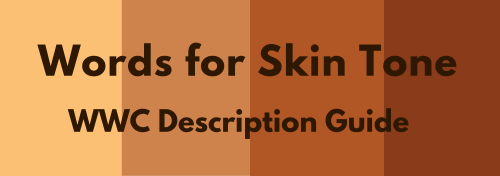
We discussed the issues describing People of Color by means of food in Part I of this guide, which brought rise to even more questions, mostly along the lines of “So, if food’s not an option, what can I use?” Well, I was just getting to that!
This final portion focuses on describing skin tone, with photo and passage examples provided throughout. I hope to cover everything from the use of straight-forward description to the more creatively-inclined, keeping in mind the questions we’ve received on this topic.
Standard Description
Basic Colors

Pictured above: Black, Brown, Beige, White, Pink.
“She had brown skin.”
This is a perfectly fine description that, while not providing the most detail, works well and will never become cliché.
Describing characters’ skin as simply brown or beige works on its own, though it’s not particularly telling just from the range in brown alone.
Complex Colors
These are more rarely used words that actually “mean” their color. Some of these have multiple meanings, so you’ll want to look into those to determine what other associations a word might have.

Pictured above: Umber, Sepia, Ochre, Russet, Terra-cotta, Gold, Tawny, Taupe, Khaki, Fawn.
Complex colors work well alone, though often pair well with a basic color in regards to narrowing down shade/tone.
For example: Golden brown, russet brown, tawny beige…
As some of these are on the “rare” side, sliding in a definition of the word within the sentence itself may help readers who are unfamiliar with the term visualize the color without seeking a dictionary.
“He was tall and slim, his skin a russet, reddish-brown.”
Comparisons to familiar colors or visuals are also helpful:
“His skin was an ochre color, much like the mellow-brown light that bathed the forest.”
Modifiers
Modifiers, often adjectives, make partial changes to a word.The following words are descriptors in reference to skin tone.
Dark - Deep - Rich - Cool
Warm - Medium - Tan
Fair - Light - Pale
Rich Black, Dark brown, Warm beige, Pale pink…
If you’re looking to get more specific than “brown,” modifiers narrow down shade further.
Keep in mind that these modifiers are not exactly colors.
As an already brown-skinned person, I get tan from a lot of sun and resultingly become a darker, deeper brown. I turn a pale, more yellow-brown in the winter.
While best used in combination with a color, I suppose words like “tan” “fair” and “light” do work alone; just note that tan is less likely to be taken for “naturally tan” and much more likely a tanned White person.
Calling someone “dark” as description on its own is offensive to some and also ambiguous. (See: Describing Skin as Dark)
Undertones
Undertones are the colors beneath the skin, seeing as skin isn’t just one even color but has more subdued tones within the dominating palette.
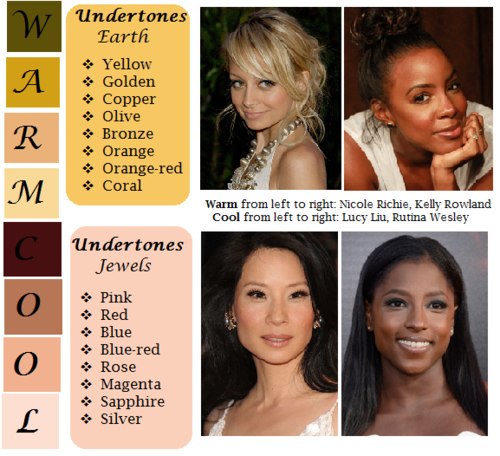
pictured above: warm / earth undertones: yellow, golden, copper, olive, bronze, orange, orange-red, coral | cool / jewel undertones: pink, red, blue, blue-red, rose, magenta, sapphire, silver.
Mentioning the undertones within a character’s skin is an even more precise way to denote skin tone.
As shown, there’s a difference between say, brown skin with warm orange-red undertones (Kelly Rowland) and brown skin with cool, jewel undertones (Rutina Wesley).
“A dazzling smile revealed the bronze glow at her cheeks.”
“He always looked as if he’d ran a mile, a constant tinge of pink under his tawny skin.”
Standard Description Passage
“Farah’s skin, always fawn, had burned and freckled under the summer’s sun. Even at the cusp of autumn, an uneven tan clung to her skin like burrs. So unlike the smooth, red-brown ochre of her mother, which the sun had richened to a blessing.”
-From my story “Where Summer Ends” featured in Strange Little Girls
Here the state of skin also gives insight on character.
Note my use of “fawn” in regards to multiple meaning and association. While fawn is a color, it’s also a small, timid deer, which describes this very traumatized character of mine perfectly.
Though I use standard descriptions of skin tone more in my writing, at the same time I’m no stranger to creative descriptions, and do enjoy the occasional artsy detail of a character.
Creative Description
Whether compared to night-cast rivers or day’s first light…I actually enjoy seeing Characters of Colors dressed in artful detail.
I’ve read loads of descriptions in my day of white characters and their “smooth rose-tinged ivory skin”, while the PoC, if there, are reduced to something from a candy bowl or a Starbucks drink, so to actually read of PoC described in lavish detail can be somewhat of a treat.
Still, be mindful when you get creative with your character descriptions. Too many frills can become purple-prose-like, so do what feels right for your writing when and where. Not every character or scene warrants a creative description, either. Especially if they’re not even a secondary character.
Using a combination of color descriptions from standard to creative is probably a better method than straight creative. But again, do what’s good for your tale.
Natural Settings - Sky

Pictured above: Harvest Moon -Twilight, Fall/Autumn Leaves, Clay, Desert/Sahara, Sunlight - Sunrise - Sunset - Afterglow - Dawn- Day- Daybreak, Field - Prairie - Wheat, Mountain/Cliff, Beach/Sand/Straw/Hay.
Now before you run off to compare your heroine’s skin to the harvest moon or a cliff side, think about the associations to your words.
When I think cliff, I think of jagged, perilous, rough. I hear sand and picture grainy, yet smooth. Calm. mellow.
So consider your character and what you see fit to compare them to.
Also consider whose perspective you’re describing them from. Someone describing a person they revere or admire may have a more pleasant, loftier description than someone who can’t stand the person.
“Her face was like the fire-gold glow of dawn, lifting my gaze, drawing me in.”
“She had a sandy complexion, smooth and tawny.”
Even creative descriptions tend to draw help from your standard words.
Flowers
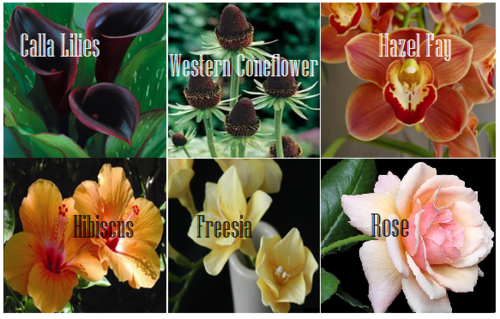
Pictured above: Calla lilies, Western Coneflower, Hazel Fay, Hibiscus, Freesia, Rose
It was a bit difficult to find flowers to my liking that didn’t have a 20 character name or wasn’t called something like “chocolate silk” so these are the finalists.
You’ll definitely want to avoid purple-prose here.
Also be aware of flowers that most might’ve never heard of. Roses are easy, as most know the look and coloring(s) of this plant. But Western coneflowers? Calla lilies? Maybe not so much.
“He entered the cottage in a huff, cheeks a blushing brown like the flowers Nana planted right under my window. Hazel Fay she called them, was it?”
Assorted Plants & Nature

Pictured above: Cattails, Seashell, Driftwood, Pinecone, Acorn, Amber
These ones are kinda odd. Perhaps because I’ve never seen these in comparison to skin tone, With the exception of amber.
At least they’re common enough that most may have an idea what you’re talking about at the mention of “pinecone.“
I suggest reading out your sentences aloud to get a better feel of how it’ll sounds.
“Auburn hair swept past pointed ears, set around a face like an acorn both in shape and shade.”
I pictured some tree-dwelling being or person from a fantasy world in this example, which makes the comparison more appropriate.
I don’t suggest using a comparison just “cuz you can” but actually being thoughtful about what you’re comparing your character to and how it applies to your character and/or setting.
Wood

Pictured above: Mahogany, Walnut, Chestnut, Golden Oak, Ash
Wood can be an iffy description for skin tone. Not only due to several of them having “foody” terminology within their names, but again, associations.
Some people would prefer not to compare/be compared to wood at all, so get opinions, try it aloud, and make sure it’s appropriate to the character if you do use it.
“The old warlock’s skin was a deep shade of mahogany, his stare serious and firm as it held mine.”
Metals

Pictured above: Platinum, Copper, Brass, Gold, Bronze
Copper skin, brass-colored skin, golden skin…
I’ve even heard variations of these used before by comparison to an object of the same properties/coloring, such as penny for copper.
These also work well with modifiers.
“The dress of fine white silks popped against the deep bronze of her skin.”
Gemstones - Minerals
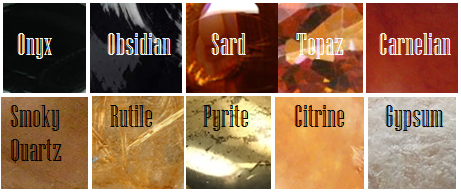
Pictured above: Onyx, Obsidian, Sard, Topaz, Carnelian, Smoky Quartz, Rutile, Pyrite, Citrine, Gypsum
These are trickier to use. As with some complex colors, the writer will have to get us to understand what most of these look like.
If you use these, or any more rare description, consider if it actually “fits” the book or scene.
Even if you’re able to get us to picture what “rutile” looks like, why are you using this description as opposed to something else? Have that answer for yourself.
“His skin reminded her of the topaz ring her father wore at his finger, a gleaming stone of brown, mellow facades.”
Physical Description
Physical character description can be more than skin tone.
Show us hair, eyes, noses, mouth, hands…body posture, body shape, skin texture… though not necessarily all of those nor at once.
Describing features also helps indicate race, especially if your character has some traits common within the race they are, such as afro hair to a Black character.
How comprehensive you decide to get is up to you. I wouldn’t overdo it and get specific to every mole and birthmark. Noting defining characteristics is good, though, like slightly spaced front teeth, curls that stay flopping in their face, hands freckled with sunspots…
General Tips
Indicate Race Early: I suggest indicators of race be made at the earliest convenience within the writing, with more hints threaded throughout here and there.
Get Creative On Your Own: Obviously, I couldn’t cover every proper color or comparison in which has been “approved” to use for your characters’ skin color, so it’s up to you to use discretion when seeking other ways and shades to describe skin tone.
Skin Color May Not Be Enough: Describing skin tone isn’t always enough to indicate someone’s ethnicity. As timeless cases with readers equating brown to “dark white” or something, more indicators of race may be needed.
Describe White characters and PoC Alike: You should describe the race and/or skin tone of your white characters just as you do your Characters of Color. If you don’t, you risk implying that White is the default human being and PoC are the “Other”).
PSA: Don’t use “Colored.” Based on some asks we’ve received using this word, I’d like to say that unless you or your character is a racist grandmama from the 1960s, do not call People of Color “colored” please.
Not Sure Where to Start? You really can’t go wrong using basic colors for your skin descriptions. It’s actually what many people prefer and works best for most writing. Personally, I tend to describe my characters using a combo of basic colors + modifiers, with mentions of undertones at times. I do like to veer into more creative descriptions on occasion.
Want some alternatives to “skin” or “skin color”? Try: Appearance, blend, blush, cast, coloring, complexion, flush, glow, hue, overtone, palette, pigmentation, rinse, shade, sheen, spectrum, tinge, tint, tone, undertone, value, wash.
Skin Tone Resources
List of Color Names
The Color Thesaurus
Skin Undertone & Color Matching
Tips and Words on Describing Skin
Photos: Undertones Described (Modifiers included)
Online Thesaurus (try colors, such as “red” & “brown”)
Don’t Call me Pastries: Creative Skin Tones w/ pics I
Writing & Description Guides
WWC Featured Description Posts
WWC Guide: Words to Describe Hair
Writing with Color: Description & Skin Color Tags
7 Offensive Mistakes Well-intentioned Writers Make
I tried to be as comprehensive as possible with this guide, but if you have a question regarding describing skin color that hasn’t been answered within part I or II of this guide, or have more questions after reading this post, feel free to ask!
~ Mod Colette
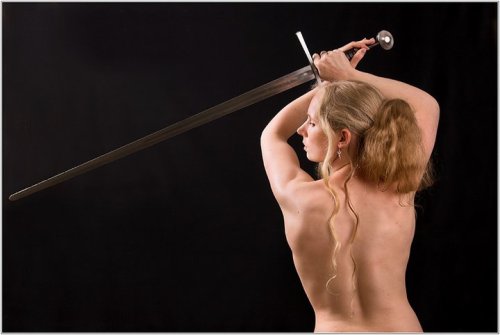
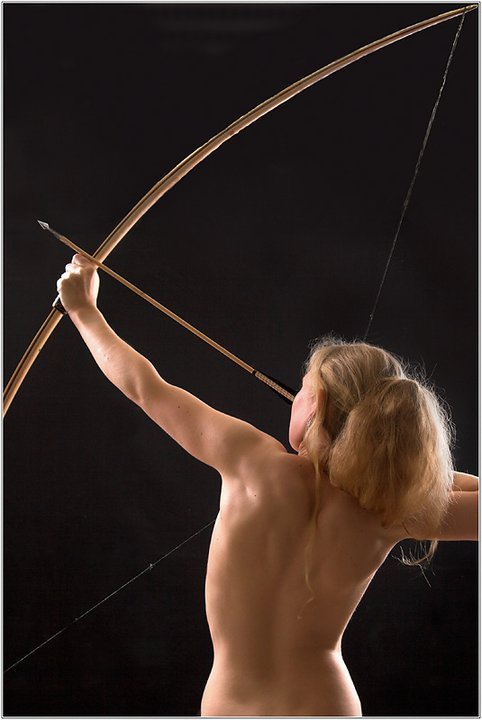
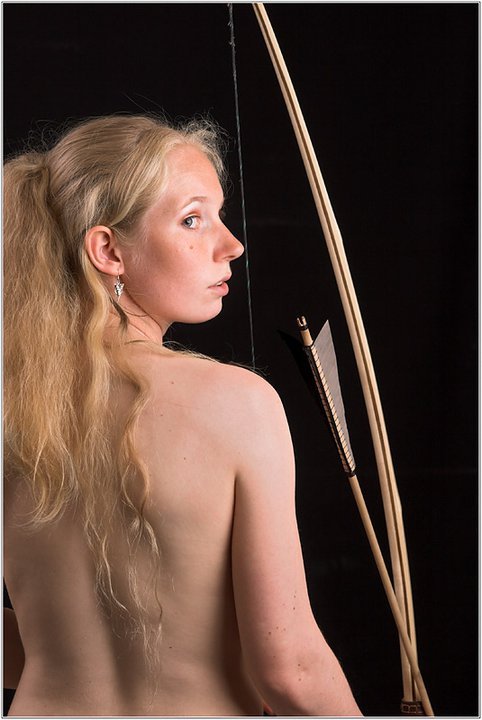

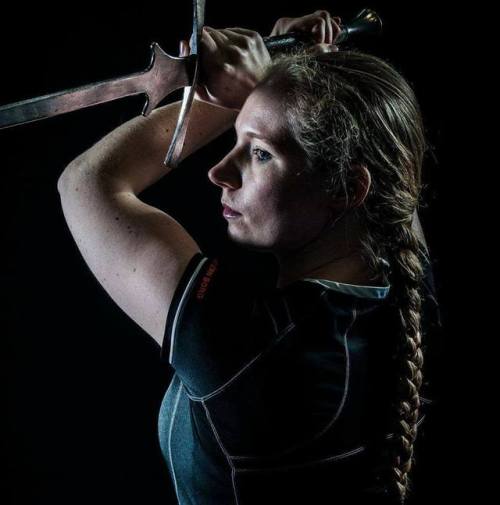

Dutch longsword fencer Tosca Beuming
Photographed by Martin Philippo and Andress Kools
DO NOT show me basic human kindness. I WILL catch feelings. If you return those feelings I WILL NOT HESITATE to marry you and build you a farm in a beautiful field overlooking some mountains. We would have goats, sheep, fluffy cows, a dog, a cat, and a rabbit named Steve. I WILL grow you a garden and use the money from the flowers and/or fruits and veggies to buy you expensive gifts. DON’T TEST ME BITCH I WILL LOVE AND SUPPORT YOU!
Oooo it’s me!!




